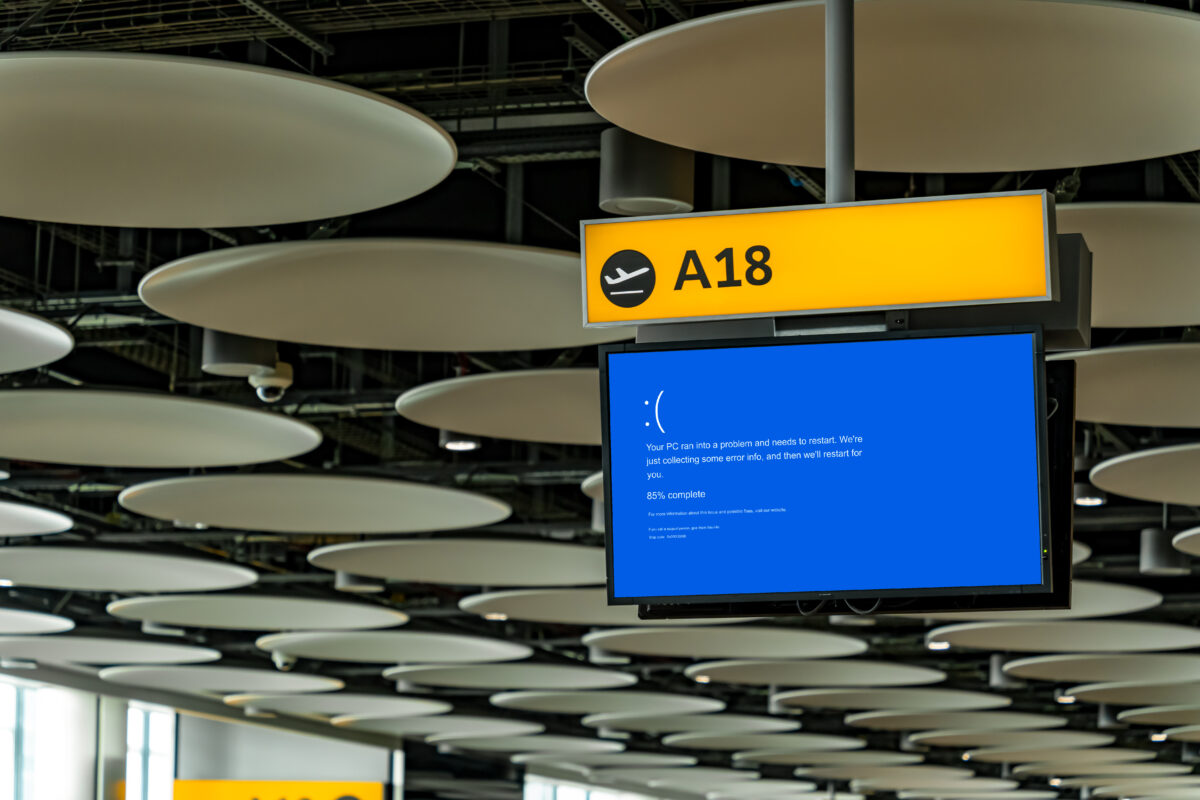CrowdStrike: 8.5 million strikes and they’re out!
On Friday July 19th, 8.5 million Window computers displayed the infamous “Blue Screen of Death”, causing global panic. Flights, online transactions, and emergency services all came to a halt. What you might not know is how common these issues really are.

What Happened?
CrowdStrike, a company that produces anti-virus software, pushed an update that caused 8.5 million Window computers to crash. 4,295 national flights were cancelled, payment systems went down, and emergency services like 9-1-1 lines went silent. People panicked, and rightfully so! Because of CrowdStrike’s usage amongst large enterprises, the outage was responsible for the “largest IT outage in history” and is reported to have cost Fortune 500 companies upwards of $5.4 billion. Although CrowdStrike has resolved the issue, responded, and is working to prevent any similar issues from happening again, they will need to work hard to regain their customer’s trust. However, outages like these are more common than you might think.
It’s More Common Than You Think
In 2020, software developer SolarWinds was targeted by a hacker group, exposing the US Treasury, the US Department of Homeland security, and many other government organizations. Three years later, Cisco left their customers vulnerable, allowing hackers to take control of their devices. Critical mistakes can happen even at the operating system level. In Windows 11’s 50+ million lines of code, mistakes happen, and they often push updates and security patches that ironically, cause more issues than they fix. Although these attacks and mistakes have not been to the scale of CrowdStrike’s, they happen, and they happen a lot. Sometimes it’s a simple bug that isn’t much of an issue and other times it’s pushing a $5.4 billion mistake. In a world with imperfect programmers writing imperfect code, mistakes are bound to happen. So, what can you do?
What You Can Do
Unless you go off the grid, you’ll undoubtedly have to deal with software issues sometime in your life. But you can do your best to be prepared!
1) Don’t be (over) reliant on one system
Although the CrowdStrike outage affected only 8.5 million computers of the roughly 1.4 billion worldwide, it showed an over reliance on Windows as an operating system, specifically in large enterprises that are responsible for many of our important services and industries. By further diversifying what systems you rely on, you can be better prepared when something inevitably goes wrong.
2) Be prepared for disaster
It’s easier said than done to not be reliant on the largest operating system in the world, so you better be prepared for issues when they do arise. Having an IT recovery plan in place will help you quickly get back on your feet. Start by understanding your most crucial systems, setting recovery objectives, ensuring your team understands their roles, and having a backup of your backup.
P.S. It’s also a good idea to test your recovery plan before you need to use it!
3) Use tested versions of software
Often when software updates are released, they aren’t perfect, and their kinks have to be ironed out. By using tested versions of software, you can ensure it works. However, it’s a delicate balance as often older versions of software may have known security breaches that can be exploited by bad actors. If it’s mission critical, don’t run on beta releases.
4) Thank your IT people 🙂
And lastly, thank your IT people! Last Friday was undoubtedly a stressful day for IT departments around the globe, so make sure to thank them for working around the clock! If you’re interested or in need of an IT support team, please reach out! Our team has been supporting the Burlington, Hamilton, Niagara, Brant, Haldimand and Norfolk regions for over 25 years.
Leave a Comment